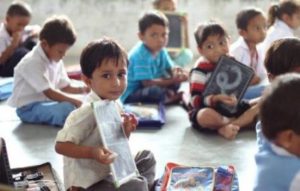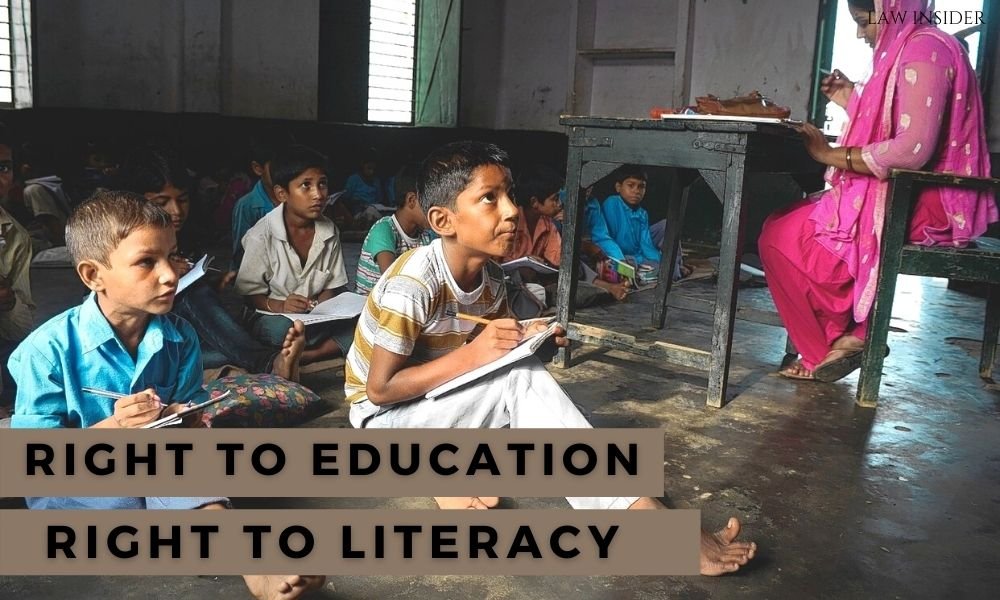By Aarushi Singh
Introduction
At many instances people uses the term ‘educated’ and ‘literate’ interchangeably whereas in reality they are two very different concepts of learning. Luckily, India is one of the nations who have made it compulsory to be literate and to have education by providing several provisions for the same.
The key difference between education and literacy is that the literacy basically refers to the ability to read and write whereas the education refers to the acquisition of knowledge.
While literacy is a key factor that helps to measure the education level in a country, these two terms are not interchangeable. Thus, although most people consider being literate and being educated as the same, there is a distinct difference between them.
India is among one of the major countries that is recognized as a knowledge and education hub. It has got a talent pool in different pools including medicine, management, technology and others.
Many big companies prefer to hire the human resources from India as it has got a higher number of management graduates passing every year.
Right to Literacy
A human starts being literate from the family after he was born, gestures to make people understand his needs, then his first words to be able to communicate with other people and later all the basic education like signing documents, calculating money or basic mathematics which are necessary life skills, the ability to understand the spoken word and read or decode written words is the key to literacy.
One also has to have an awareness of speech sounds, word meanings, spelling patterns, grammar and word formation in order to become fully literate in a language.
Literacy is basically one’s ability to read and write. However, this traditional definition of literacy is no longer valid for the modern world. In simple words, literacy is the ability to survive without having a degree it includes the ability to use numbers, language, images, computers to certain extent but in India it is not very necessary and other fundamental means to understand, communicate and acquire useful knowledge.
According to the UNESCO definition, literacy is the “ability to identify, understand, interpret, create, communicate and compute, using printed and written materials associated with varying contexts”.
In the modern world, literacy is the ornament which is used to fine a person’s educational level and skills and simultaneously it calculates a countries education level of its total population. The past few decades have seen a rise in the literacy levels in all over the countries including India.
UNESCO Report on literacy 2015 have established the fact that India’s adult literacy rate is 81% and youth literacy rate is 91.66%, whereas, the world’s average literacy rate for adults is 86.2% and world’s average literacy rate for youth is 91.20%. India’s literacy rate is at 74.04%. Kerala has achieved a literacy rate of 93.91%.[1] Bihar is the least literate state in India, with a literacy of 63.82%.[2]
Besides UNESCO’s aims to increase the education levels in the world, India was still battling with illiteracy. So, government came up with various missions such as National Literacy Mission, which was launched in 1988. The aims of this missions was to attain a literacy rate of 75% by the end of 2007. The aim is too literate the 35-75 years of population.
The total literacy Campaign is the principal strategy and Continuing Education Scheme provided a continuous learning programmes by providing post literacy and Total Literacy programmes. Another campaign was Surva Shiksha Abhiyan, which was launched in 2001 to ensure that all the children between the ages of 6-14 years attend proper school and complete their schooling by the end of the 2010.
This Campaign guaranteed alternative and innovative education for primary children. The centrally sponsored District Primary Education Programme, launched in 1994, had opened more than 160,000 new schools by 2005, including almost 84,000 alternative schools.
Along with the governmental efforts there are Non-Governmental Organizations as well which kept working on the moto. Most of the country’s illiterates were living in the rural areas and had economic as well as social barriers which played important roles in keeping the lowest strata of the society illiterate.
Several non-governmental organisations such as Pratham, ITC, Rotary Club, and Lions Club have worked to improve the literacy rate in India. They brought campaigns like Manthan Sampoorna Vikas Kendra, which is a holistic education program.
The main aim of Manthan is to provide not just academic but also mental, physical and emotional education. Manthan has also been working for adult literacy through its Adult Literacy Centres for illiterate women.
Right to Education
Right to education is a fundamental human right in India, education lays the foundation of a human in the world. A well educated person is more likely to be employed and get paid for his works worth well. Education promotes freedom and empowerment, it affects a person’s brain by making it more innovative and create.
Education actually open various doors in life, mostly educated people are more likely to have a great decision making ability and more knowledge to share, they tend to make their opinions well and they adapt the changes in compliance with the changing world.
Yet millions of children and adults remain deprived of educational opportunities, many due to poor economic conditions. Education is a powerful tool by which economically and socially marginalized adults and children can lift themselves out of poverty and participate fully as citizens.[3]
United Nations and UNESCO lay international legal obligation on all the nations to provide right to education to everyone in their nations. Such obligations have increased the levels of world’s educational rate as well as each nation’s rate as well. In compliance with these obligations, India has proposed Right to Free and Compulsory Education (RTE) Act, making education a fundamental right of every child in the age group of 6 to 14.
Right to education has a wider scope it includes a responsibility to provide basic education for individuals who have not completed their primary education, right to education is not discriminatory and is improving the quality and standards of education in India.
India have recognized the right to education in its constitution along with the right to like, it states that, “the right to education flows directly from the right to life. The right to life and the dignity of an individual cannot be assured unless it is accompanied by the right to education.” It was expressly established in the case of Mohini Jain Vs State of Karnataka[4].
In Maharashtra State Board of Secondary and Higher Education v. K.S. Gandhi[5], right to education at the secondary stage was held to be a fundamental right. In J. P. Unnikrishnan v. State of Andhra Pradesh[6], a constitution Bench had held education up to the age of 14 years to be a fundamental right.
Along with the Constitution of India (Eighty-sixth Amendment) Act, 2002 Article 21-A[7], India has Right to Education Act as well which was enacted in 2010 which is a historical day in India even today.
The Right of Children to Free and Compulsory Education (RTE) Act, 2009, which represents the consequential legislation envisaged under Article 21-A[8], means that every child has a right to full time elementary education of satisfactory and equitable quality in a formal school which satisfies certain essential norms and standards.

The major provisions of the Right of Children to Free abd Compulsory Education (RTE) Act, 2009 are:
- This Act provides free education to all the children till completion of elementary education in any neighborhood school.
- It makes it obligatory for the government to provide free elementary education. The government has to monitor that all the children are getting free elementary education in their region as well as compulsory admissions, attendance etc.
- It makes provisions for a non-admitted child to be admitted to an age appropriate class.
- It specifies certain duties and responsibility to the government and local authorities who works under the capacity of authorized government and parents as well.
- It prohibits physical punishments and mental harassment to children, screening procedures for admissions, capitation fee, private tuition by teachers and running of schools without recognitions.
- All the teachers are appointed after providing them proper training as well as a set of qualification is there which is required.
- It provides infrastructures of school set-up within the territory as well.
Conclusion
Being literate is the first step towards being educated. Literacy is as important as education, it is a life skill whereas education is a greater skill. Education is about knowing your skills and abilities and then enhancing them by working on them and using them in the right direction while literacy is the skill which is required to know your skills in the first space.
Literacy is the alphabets and education is the complicated sentences that we make out by combining all those 26 letters over and over again. The skills can be different but the alphabets never changes and without alphabets no sentences could never be made.
They both goes together in one direction had in hand whereas a person who is well educated is more likely to have a better and stable life then the person who is merely literate. India has its right to literacy for the adults specifically because the nation has various programs for children’s educational human rights and the difference we can see in the statistics a lot many people are educated and a lot many people are literate today in India.
One must always try to learn more and more each day, every learning is beneficial in one or another way, either today or tomorrow.
Reference-
- Times of India, 2015 ↑
- Statistics of Literacy Rate in India Report, 2015. ↑
- Available on http://www.legalservicesindia.com/article/1925/Right-to-Education.html ↑
- (1992) 3 SCC 666. ↑
- (1993) 1 SCC 645. ↑
- JT 1997 (5) SC 285. ↑
- 21A. The State shall provide free and compulsory education to all children of the age of six to fourteen years in such manner as the State may, by law, determine. ↑
- Ibid. ↑

